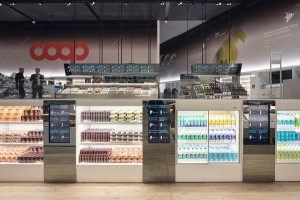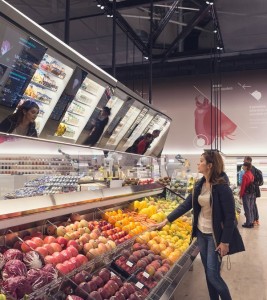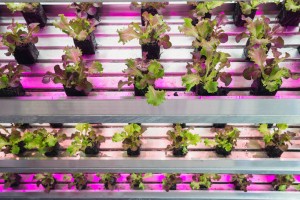Business online architecture is driven by the culture of cloud computing adapted for use with mobile technologies.
And it creates a “constantly connected” environment that we either master to serve us in three major themes, or we become slaves to our own electronic environment.
Those themes are effectiveness and productivity, balance and awareness, growth and personal awareness.
Being dynamic themes they need nurturing and regular revision.
i2P is responding to the premise (that I’m sure that many of you acknowledge) that our connected world seems to bring as many challenges as it does opportunities.
In addition, the concept of work-life balance is gone and everything has become blurred. Our days have changed radically in just a few years.
We dynamically shift from states of live, work, and play hour- by-hour, often minute-by-minute.
So not only do we have the challenge of managing ourselves in this blurred landscape, but we have to engage and help our customers/patients to manage themselves better and engage with them electronically with tools that are as unobtrusive as possible.
That there are opportunities for pharmacy is undeniable, but the connected design has to be thought through very thoroughly.
Further along this article retail and professional opportunities are discussed as i2P begins to explore the connected future.
Be aware that this specific project is being driven by supermarket interests and that at least one Australian supermarket has piloted the use of iPads to deliver pain management information as an attempt to bypass the traditional pharmacist advice.
Their pilot failed, but the Italian pilot we report on further along this article, will not fail because they are measuring every input and every outcome continuously.
That puts pharmacy in the firing line again, because without the equivalent system, pharmacy will be undermined in precisely the area that it has been strongest – patient information delivery.
It will be a new form of competition between pharmacies and supermarkets, but there is potential to reverse any adverse outcomes by competing with new information strategies.
Connectivity has already commenced in health (pharmacies are using SMS messaging for prescription reminders), in food preparation, in areas of fitness programs.
Education has started to be engaged within the connected world and approximately twenty other formats are rapidly emerging.
Of particular importance for pharmacists is connected education and training, that will need to be designed to fit the new realities of our “always-on” lifestyles, offering bite-sized engaging lessons that can easily be consumed in short bursts, in situations where time and attention are at a premium.
Journalist Katharine Murphy describes the side effects of the connected world as:
“The fact is I’m burned out, overstimulated. A mind fuse has blown. Yet I’m still chasing the inputs. I keep glancing at my smartphone, even when it’s switched to silent. I can see the subtle vibration each time a new piece of correspondence arrives. Its constancy is implacable. I’m on a travelator and I can’t get off.
“Digital connectedness is seductive because we have the comfort of the crowd and the knowledge we can keep the crowd at a distance. We are in control of those relationships. We can choose to be anonymous online if we want to. We can construct an identity different from our lived reality. We can throw rocks through windows in the form of abuse, we can reach out to others in community and solidarity, we can campaign against things we don’t approve of with a click of a button. And if we want to, we don’t have to meet anyone, talk to anyone, engage with anyone, empathise with anyone.”
I can relate to all of the above as I am being dragged by my bootlaces into an electronically connected world, mostly by my children, but especially by my grand-children and great-grandchildren.
I am being pushed and dragged into their word of Facebook and SMS messaging and I don’t really want to, except that I become virtually excommunicated from their world if I do not participate. That seems to be a reversal of what it should be.
Life, whether family, social or business is becoming increasingly connected and we all have to respond as pharmacists, and in our private lives.
It all seems to be merging into one long conveyor belt and moving at a graduated speed that is forever increasing in velocity.
Suddenly work-life balance is becoming unmanageable and I am caught between the compulsion to keep up and suffer continual burnout or dropping out for a limited period and suffer the quietness and isolation.
I saw a recent survey on our connected landscape, and it read as follows:
10% have checked their phone during sex; 70% of Americans check their smartphones every 6 minutes; 79% feel it will be harder to reach their financial goals than it was for their parents; 80% think flexible work is important for a positive work- life balance; 41% of employees are required to be in contact outside of work.
Stress-related health issues cost the US $180B per year.
The Modern Consumer: Never alone, always connected, constantly consuming,
often sedentary.
To me, the above survey indicates a form of addiction, mostly unhealthy to say the least.
Yet it is happening and it will take a series of social corrections to “get it right.
I have yet to come to terms with the management of my own “connectiveness”, yet it must be done.
So too will each pharmacist come to this conclusion because the new paradigm pharmacy will become a connectivity hub.
The implications of hub management have yet to be revealed and managed to a level where fatigue is limited with interest and curiosity being maintained at an optimum level.
Take one prime example that is being demonstrated at the centre of the World Expo, where an innovative display explores how digital technology can change our interactions with food – and with our fellow human beings.

The Future Food District (FFD), contains a 7000 sq. m. thematic pavilion that explores all of these issues and has become a virtual research laboratory, constantly documenting evidence.
Designed by Italian design firm Carlo Ratti Associati, together with supermarket chain COOP Italia, the pavilion — lying at the heart of the exhibition grounds — explores how data could change the way that we interact with the food that we eat, informing us about its origins and characteristics and promoting more informed consumption habits.
“Every product has a precise story to tell,” says Carlo Ratti, founding partner of Carlo Ratti Associati and a professor at the Massachusetts Institute of Technology.

“Today, this information reaches the consumer in a fragmented way.
But in the near future, we will be able to discover everything there is to know about the apple we are looking at: the tree it grew on, the CO2 it produced, the chemical treatments it received, and its journey to the supermarket shelf.”
Pharmacy has always prided itself on its delivery of information to patients, but it has never reached the depth that is being demonstrated at the Future Food District pavilion where information is managed to the consumer and beyond.
In this Italian model for a future supermarket they are being promoted as educational establishments.
Can your pharmacy make this claim?
With a little bit of imagination, the type of information delivery and its ability to connect with others would be seen to be far superior to anything that pharmacy could conceivably build at the moment.
Yet information for pharmacy consumers goes to its heart as a component of “core business”.
Here is a major “point of difference” that could be at the centre of the new paradigm pharmacy that would enhance its destination appeal, release key staff (pharmacists) from providing basic information and elevate the delivery of higher level information through a filtered access that creates commercial opportunities and patient benefit for this level of service.
It is a template for a “Self Care” backbone.
The Pavilion at Expo 2015 is a real supermarket, where people can interact with – and buy – products. Its interior resembles a sloping warehouse, with over 1500 products displayed on large interactive tables.
As people browse different products, information is visible on suspended electronic mirrors augmented with digital information.
“It will be like seamless augmented reality, without Google Glasses or any other cumbersome interface, where people can meet and exchange products and ideas,” said Andrea Galanti, project leader at Carlo Ratti Associati.
“In a way, it is like a return to the old marketplace, where producers and consumers of food saw each other and had actual interactions”.
“We were inspired by Mr. Palomar from Italo Calvino’s book of the same name, who enters a fromagerie in Paris and thinks that he’s in a museum,” adds Ratti.
“ ‘Behind every cheese there is a pasture of a different green under a different sky. Mr. Palomar feels as he does in the Louvre, seeing behind every object the presence of the civilization that has given it form.’
We believe that tomorrow’s markets will make us feel a bit like Mr. Palomar.
Every product will have a story to tell.”
This enhanced knowledge of products can, in turn, create new social links among people.
Think about leveraging the sharing economy and peer-to-peer dynamics to create a free exchange area where everyone can be both a producer and a consumer.
The same process can be applied to a community pharmacy.
The Plaza outside the FFD supermarket is also showcasing new ways of producing food, such as vertical hydroponic systems for growing vegetables, and algae and insect harvesting.
It’s called “urban agriculture”.
Interest is growing in this activity because of consumer concerns relating to the contamination of foods through pesticides and herbicides, and further contamination through processing in the form of preservatives and artificial flavouring, as well as genetic modification.
 As food is an integral and primary component of health, pharmacists will become more involved in consumer nutrition, so there will be a convergence of activities.
As food is an integral and primary component of health, pharmacists will become more involved in consumer nutrition, so there will be a convergence of activities.
And that will give rise to an unusual form of competition with supermarkets because you can become involved with helping customers/patients avoid some significant supermarket purchases through assisting them to grow their own fresh produce in the format of “urban agriculture”.
The Future Food District is a truly innovative project, offering visitors the chance to try out possible future scenarios for the food supply chain and to explore a wide variety of food products and a new level of consciousness through a new relationship with food.
It is done through utilising seamless and user-friendly technology so as to not overwhelm people.
Here is a variation on the theme utilised by the Rebecca Minkoff stores in New York.
They have incorporated companion sales techniques to suggest alternative styles.
This technology is already here in Australia, utilised by fashion retailers such as David Jones and Target.
One of its more innovative uses is with pizza retailers.
Not only can you key in your ingredients by touch screen, but they are automatically transmitted to the kitchen with an order slip printed for the customer.
Customer contact is maintained in store using queuing software so that customers know where they are on the production line.
If the pizza is nominated for home delivery, the customer tracks the delivery on a special mobile phone app that allows the customer to plot the actual delivery vehicle location.
Provided this type of technology is maintained at a seamless level, customers will utilise it and cost savings become available.
The pizza system is one that could be adapted for pharmacy because many of its “ingredients” have a similar application for pharmacy.
These are systems that have to be purpose built and extended or have add-ons to enhance the entire process.
It will always be a work in progress and pharmacy competitors are already under way.
